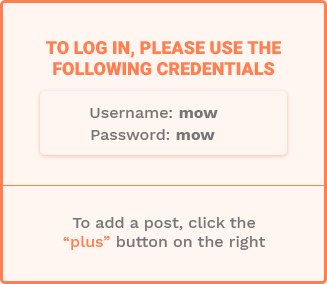Now Reading: How to Write Clear and Concise Emails (With Examples)
-
01
How to Write Clear and Concise Emails (With Examples)
How to Write Clear and Concise Emails (With Examples)

How to Write Clear and Concise Emails (With Examples)
A staggering 269 billion emails are sent and received every day worldwide, making email one of the most prevalent forms of communication in the digital age.
Effective email communication is crucial, both in business and personal contexts. The ability to convey messages clearly and concisely can significantly impact how messages are received and interpreted.

This article will explore the art of crafting emails that are both clear and concise, providing tips and examples to enhance your email writing techniques.
Key Takeaways
- Understand your audience before drafting an email.
- Use clear and concise language in your emails.
- Structure your emails for better readability.
- Avoid using jargon or overly technical terms.
- Proofread your emails before sending.
- Use effective subject lines to improve open rates.
The Impact of Email Communication in Today’s World
Effective email communication is crucial in the modern world, where digital correspondence has become the norm. As we navigate through the complexities of global interactions, the significance of clear and concise email writing cannot be overstated.
Statistics on Daily Email Volume in Business
Businesses today rely heavily on email for daily operations. Statistics show that the average office worker receives dozens, if not hundreds, of emails daily. This high volume underscores the need for effective writing strategies to ensure that messages are conveyed efficiently.
How Email Clarity Affects Productivity and Relationships
Email clarity directly impacts productivity and professional relationships. When emails are clear and concise, they facilitate quicker responses and reduce misunderstandings. This clarity is a hallmark of professional writing and is essential for improving writing skills. By adopting clear email practices, individuals can enhance their communication, leading to better outcomes in both personal and professional spheres.
Understanding Your Audience Before You Write
To craft a compelling email, you must first consider who will be reading it. Understanding your audience is crucial for effective communication, whether it’s for business or casual purposes.
Analyzing Your Primary and Secondary Readers
Identifying your primary and secondary readers helps tailor your message. Your primary readers are those who need to take action based on your email, while secondary readers might be CC’d for informational purposes.
| Reader Type | Role | Action Required |
|---|---|---|
| Primary | Decision-makers | Yes, action needed |
| Secondary | Informational recipients | No, for information only |
Determining Your Email’s Specific Purpose
Clearly defining the purpose of your email helps in crafting a focused message. Are you requesting information, providing updates, or asking for a decision?
Using writing techniques like the BLUF (Bottom Line Up Front) method can enhance clarity. This involves stating the main point at the beginning.
Adjusting Formality Based on Relationship Context
The level of formality in your email should reflect your relationship with the recipient. Business emails typically require a formal tone, while emails to colleagues or friends can be more casual.
By understanding your audience and adjusting your writing style accordingly, you can improve the effectiveness of your emails. This involves considering the context, purpose, and the readers’ needs.
Essential Writing Skills for Effective Emails
In the realm of professional communication, writing effective emails is a fundamental competency. To convey messages clearly and achieve desired outcomes, one must employ several key writing skills.
Clarity and Precision in Language Choice
Using clear and concise language is crucial for effective email communication. It involves selecting words that accurately convey the intended message without ambiguity. Avoiding jargon and overly technical terms unless necessary for the context can enhance clarity.
Conciseness and Economy of Words
Being concise is about conveying the necessary information in as few words as possible without sacrificing clarity. This skill helps in maintaining the reader’s attention and improving the likelihood of a prompt response.
Organization and Logical Flow Techniques
A well-organized email follows a logical structure, making it easier for the reader to understand and act upon. Techniques such as the Progressive Disclosure Method and Context-First Approach can be particularly effective.
Progressive Disclosure Method
This method involves gradually revealing information, starting with the most critical details. It’s especially useful in complex communications where the reader needs to grasp key points quickly.
Context-First Approach
By providing context at the outset, the reader is better equipped to understand the subsequent details and the rationale behind them. This approach helps in framing the message appropriately.
Mastering these writing skills can significantly enhance the effectiveness of emails, leading to better communication and more productive outcomes.
- Use clear and concise language.
- Be concise and avoid unnecessary words.
- Organize content logically.
Crafting Subject Lines That Demand Attention
The subject line of an email is the first, and sometimes the only, chance to make an impression on the recipient. It determines whether the email is opened or ignored, making it a crucial element in email communication.
The 5-7 Word Rule for Maximum Impact
Research suggests that subject lines with 5-7 words are more effective. This length is long enough to convey the message but short enough to avoid being truncated on mobile devices.
For instance, a subject line like “Meeting Rescheduled for Friday” is concise and directly conveys the purpose.
Including Action Words and Deadlines
Using action words and including deadlines can significantly increase the effectiveness of subject lines. Phrases like “Action Required” or “Response Needed by Friday” prompt the recipient to take immediate action.
Examples of Effective vs. Ineffective Subject Lines
Let’s examine some examples:
Business Context Examples
- Effective: “Project Update: Submission Deadline Extended”
- Ineffective: “Update on the Project and Some Other Stuff”
Casual Communication Examples
- Effective: “Let’s Catch Up This Weekend?”
- Ineffective: “Just a Random Thought”
| Subject Line | Effectiveness | Reason |
|---|---|---|
| “Meeting Rescheduled for Friday” | High | Clear and concise |
| “Just a Thought” | Low | Lacks clarity and purpose |
By applying these writing strategies and tips, you can improve your writing skills and craft subject lines that demand attention, thereby enhancing your email communication.
Structuring Your Email for Scanability
Emails that are structured for scanability can significantly enhance the reader’s ability to quickly grasp the intended message.
The Inverted Pyramid Approach
The inverted pyramid is a writing technique that involves presenting the most critical information at the beginning of the email, followed by supporting details.
This approach is particularly effective in business emails where the reader may only have time to scan the content.
Strategic Use of Paragraphs and White Space
Using short paragraphs and incorporating white space effectively can make an email more readable.
- Break up long blocks of text into shorter paragraphs.
- Use line breaks to separate distinct ideas.
- Avoid cluttering the email with too much information.
Implementing Bullet Points and Numbered Lists
Bullet points and numbered lists are effective writing tools for presenting complex information in a clear and concise manner.
When to Use Each Format Type
Use bullet points for listing items that don’t require a specific order, such as features or benefits.
Numbered lists are ideal for instructions or sequences of events.
- Clearly outline the steps or items.
- Ensure each point is concise and directly related to the topic.
By applying these effective writing strategies, you can improve the scanability of your emails, making them more likely to be read and understood.
Writing Openings That Set the Right Tone
Crafting an effective opening for your email is crucial in setting the right tone for the rest of your message. The opening is the first thing your reader sees, and it can significantly influence how they perceive the content that follows.
Professional Greetings for Business Contexts
When writing a business email, it’s essential to use a professional greeting that is appropriate for your audience and the context of your message.

Casual Openings for Personal Communications
In contrast, when writing a personal email to friends, family, or acquaintances, you can use a more casual tone in your greeting.
Examples of Contextually Appropriate Openings
To illustrate the effectiveness of different openings, consider the following examples:
- Formal Business Email Example:
- “Dear Mr. Smith,
- I hope this email finds you well. I am writing to inquire about the status of our ongoing project.”
- Casual Personal Email Example:
- “Hey Alex,
- How’s it going? I just wanted to drop you a line and let you know that I’m thinking of grabbing coffee together soon.”
By examining these examples, you can see how different openings can be used to convey the appropriate tone for your email, whether it’s formal or informal.
When crafting your email opening, consider the context, audience, and purpose of your message to ensure that your greeting is effective in setting the right tone.
Crafting a Focused and Concise Email Body
When writing an email, it’s crucial to maintain a clear and concise message. The one email, one purpose rule and the BLUF technique can help you achieve this. By eliminating redundancy and filler words, you can make your email more effective.
The One Email, One Purpose Rule
Sticking to a single purpose is vital. Avoid confusing your readers by having multiple purposes in a single email.
Using the BLUF (Bottom Line Up Front) Technique
Presenting the most important information at the beginning of your email helps readers quickly grasp the main points. State the key information upfront, followed by any necessary explanations or supporting details.
Eliminating Redundancy and Filler Words
Remove unnecessary words and phrases to improve clarity. Filler words like “um” or “ah” can detract from your writing’s polish.
Before and After Examples
Consider these examples to understand the importance of a focused and concise email body. By applying the strategies outlined above, you can significantly enhance the clarity and effectiveness of your email.
Creating Actionable Closings That Get Results
Effective email closings are not just about ending a message; they’re about driving results and fostering engagement. A well-crafted closing can prompt the desired response, clarify next steps, and leave a lasting impression on the recipient.
Clearly Stating Expected Next Steps
One of the most critical elements of an effective email closing is clearly stating the expected next steps. This could involve requesting a follow-up meeting, setting a deadline for a response, or outlining the actions you will take. By being clear and direct, you help ensure that your email leads to tangible outcomes.
For instance, you might say, “I look forward to discussing this further at our meeting on Friday. Please come prepared with your thoughts on the proposal.” This approach leaves no ambiguity about what is expected next.
Appropriate Sign-offs for Different Relationships
The sign-off you choose can significantly impact the tone of your email. For business communications, professional sign-offs like ‘Best regards’ or ‘Sincerely’ are typically appropriate. In contrast, more casual relationships might allow for ‘Thanks’ or ‘Cheers’.
Examples of Effective Call-to-Action Closings
Effective call-to-action (CTA) closings are crucial for prompting a response or action from the recipient. For example, “Please let me know by the end of the week if you can attend the conference” is a clear CTA. Another example could be, “I will follow up with a phone call next Wednesday to discuss the proposal in more detail.”
By incorporating these strategies into your email closings, you can enhance their effectiveness and achieve better results from your email communications.
Email Etiquette Across Different Platforms
With the rise of digital communication, understanding email etiquette across various platforms is crucial for effective communication. This section will explore the nuances of email etiquette, focusing on mobile-friendly considerations, best practices for CC, BCC, and Reply All, and strategies for managing email threads and conversations.
Mobile-Friendly Email Considerations
When crafting emails, it’s essential to consider the limitations and capabilities of mobile devices. With the majority of users accessing their emails on smartphones or tablets, a mobile-friendly approach is vital. This involves using a responsive design, concise subject lines, and clear formatting to facilitate easy reading on smaller screens.
CC, BCC, and Reply All Best Practices
Using CC (Carbon Copy) and BCC (Blind Carbon Copy) fields effectively is crucial for maintaining clarity and organization in email communication. The CC field is used to include recipients who are not the primary addressees, while BCC is used for recipients who should not be visible to the primary recipients. Understanding when to use Reply All is also important, as it can either facilitate a straightforward response or lead to confusion if overused.
Managing Email Threads and Conversations
Managing email threads and conversations effectively is key to maintaining clear and organized communication. This involves using clear subject lines, concise paragraphs, and strategic use of formatting to guide the reader through the email content. By doing so, you can facilitate a smooth conversation flow and reduce the likelihood of misinterpretation or confusion.
| Best Practices | Mobile-Friendly | CC/BCC/Reply All | Email Threads |
|---|---|---|---|
| Use clear subject lines | Responsive design | Use CC/BCC judiciously | Organize email threads effectively |
By following these guidelines and best practices, you can significantly enhance the clarity, effectiveness, and overall quality of your email communications across different platforms.
Common Email Writing Mistakes and How to Fix Them
Effective email writing is crucial for clear communication. This section highlights common mistakes and provides tips on how to improve your email writing skills.
Overcomplication and Unnecessary Jargon
Using overly complex language or unnecessary jargon can confuse or alienate your readers.
Emotional Language and Tone Mismatches
The tone of your email significantly impacts how your message is received. Avoid using emotional language or a tone that doesn’t match the context or audience.
Grammar and Punctuation Pitfalls
Grammar and punctuation errors can detract from the clarity and credibility of your email. Avoid common mistakes to improve your writing.
Real-World Error Examples and Corrections
Examples of common grammar and punctuation mistakes are provided, along with their corrections, to help you improve your email writing skills.
Email Templates for Various Situations
Email templates can significantly streamline communication in various contexts, from business to personal correspondence. By having a set of well-crafted templates, individuals can ensure clarity, efficiency, and professionalism in their emails.
Business Request and Follow-up Templates
For business communications, templates can be particularly useful. A well-structured template for business requests can help in clearly stating the purpose, requirements, and expected outcomes. For instance, a template might include a clear subject line, a concise introduction, a detailed body, and a call to action.
Follow-up emails are also crucial in business contexts. A follow-up template can be used to check on the status of a request or to reiterate the importance of a pending task. Effective follow-up emails can help keep projects on track and ensure timely responses.
Problem-Resolution Email Frameworks
When dealing with issues or conflicts, email templates can provide a structured approach to resolving problems. These templates can help in clearly defining the issue, proposing solutions, and outlining next steps. Using a calm and objective tone is key to effective problem-resolution emails.
Casual Communication Templates
Casual emails to friends, family, or social contacts require a different tone and structure. Templates for casual communications can help in crafting emails that are friendly, engaging, and appropriate for the recipient.
Friend and Family Email Examples
Emails to friends and family often involve sharing updates, making plans, or simply keeping in touch. Templates can be used to ensure that these emails are warm and inviting. For example, a template for a family update might include sections for news, upcoming events, and personal anecdotes.
Social and Community Correspondence
For social and community-related emails, templates can help in organizing events, sharing information, or soliciting feedback. These templates should be engaging and informative, encouraging recipients to participate or respond.

By utilizing these email templates for various situations, individuals can enhance their communication skills, ensuring that their messages are conveyed effectively and professionally.
Conclusion: Elevating Your Email Communication
Effective email communication is crucial in today’s digital age. As you’ve learned throughout this article, crafting well-structured emails requires a combination of clarity, precision, and an understanding of your audience. By applying the strategies and tips discussed, you can significantly improve your email writing skills, making your messages more engaging, clear, and actionable.
To recap, we’ve explored various aspects of professional email writing, from understanding your audience and the importance of clarity and conciseness, to crafting subject lines and structuring your emails for maximum impact. By integrating these elements, you’ll be well on your way to elevating your email communication, enhancing your professional writing skills, and fostering stronger relationships with your recipients.
As you continue to refine your email writing skills, remember that the key to effective email communication lies in being clear, concise, and considerate of your audience’s needs. By doing so, you’ll not only improve your ability to convey your message but also build trust and credibility with your readers, ultimately leading to more successful outcomes in your personal and professional interactions.
By following these guidelines and best practices, you’ll be able to create emails that are not only well-received but also effective in achieving your intended purpose, whether it’s for business, personal, or other purposes.
FAQ
What are the key elements of writing a clear and concise email?
The key elements include understanding your audience, using clarity and precision in language choice, being concise, and organizing your email with a logical flow. Techniques such as the progressive disclosure method and context-first approach can also enhance email clarity.
How can I craft a subject line that demands attention?
To craft a compelling subject line, follow the 5-7 word rule, include action words, and specify deadlines when relevant. Examples of effective subject lines can be seen in both business and casual contexts, where clarity and relevance are key.
What is the importance of structuring my email for scanability?
Structuring your email for scanability is crucial as it allows readers to quickly grasp the main points. Techniques include using the inverted pyramid approach, strategic use of paragraphs and white space, and implementing bullet points and numbered lists appropriately.
How do I write an effective email opening?
Writing an effective email opening involves using professional greetings in business contexts and casual openings in personal communications. The tone should be appropriate for the context, setting the right tone for the rest of the email.
What are some common email writing mistakes and how can I avoid them?
Common mistakes include overcomplication, using unnecessary jargon, emotional language, and tone mismatches, as well as grammar and punctuation errors. To avoid these, focus on clarity, be mindful of your tone, and proofread your emails before sending.
Can you provide examples of email templates for different situations?
Yes, email templates can be useful for business requests, follow-ups, problem-resolution emails, and casual communications. Examples include templates for friend and family emails, as well as social and community correspondence, which can be adapted based on the context and purpose.
How can I improve my email writing skills?
Improving your email writing skills involves practicing effective writing techniques, understanding your audience, and being mindful of the structure and content of your emails. Applying the tips and strategies discussed, such as clarity, conciseness, and proper etiquette, can significantly enhance your email communication.






























